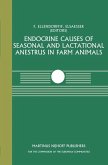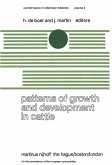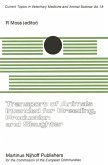In some countries, especially on the European continent, there still exists a remarkable veal market. This type of meat production seems, irrespective of any economic forecasts, to remain unchallenged so long as consumers expect that restaurants should offer courses like "r6ti de veaux", "vitello a la casa" or "Kalbsschnitzel". Producers, at least since about the past 1-/2 decades, have been aware of the beneficial effect of anabolic agents in veal production. This is possible due to the lack of endogenous sexual hormones during the juvenile or prepuberal status of these animals. A discussion about the benefit / risk - evaluation in connection with the use of anabolic agents in general was promoted in recent years by the public. This concern occurred concomitantly with the detection of illegally treated veal calves and the occurrence of diethylstilbestrol (DES) residues in canned food containing veal. The aim of this paper is to summarize the present status of residue data in edible tissues and excreta in order to allow the evaluation of the risk (given in the paper of Hoffmann within this program) and to consider reasonable monitoring measures. We have to face the fact that without an efficient control system the illegal treatment of calves can not be excluded. Therefore, this paper will not only consider different compounds and formulations, but will also deal with practised routes of administration.








